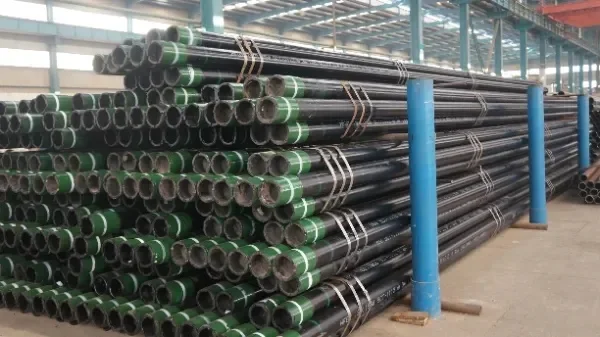How To Choose Among Different Types of Oil Country Tubular Goods
Oil well pipes are an indispensable and important part of the petroleum industry. They are used to transport oil and gas, as well as to detect and collect in oil wells. When selecting oil well tubular products, various factors need to be considered, including pipe material, size, thickness, connection method, etc. This article will focus on how to choose different types of OCTG products.
Applications to Consider: OCTG is used in a variety of drilling applications, including exploration, production, and completions. Each application has different requirements for the type of OCTG used. For example, casing is used to line wellbores and prevent them from collapsing, while tubing is used to transport fluids from reservoirs to the surface. Therefore, it is important to determine the specific application and choose the proper oil well tubing accordingly.

Consider the material
OCTG is made of different materials, such as carbon steel, alloy steel, stainless steel, etc. The choice of material depends on operating conditions such as temperature, pressure, and corrosiveness of the well fluid. For example, high-pressure and high-temperature wells require OCTG made of high-strength alloy steel to withstand harsh conditions.
View grades: OCTG is divided into different grades based on its strength and performance characteristics. Grade selection depends on well depth, formation type, and expected loads. Higher grades of OCTG can withstand higher loads and pressures, but they are also more expensive. Therefore, it is important to balance performance requirements with cost.
Size and thickness
The size and thickness of the oil well pipe are important factors affecting its bearing capacity and service life. Generally speaking, oil well pipes with larger pipe diameters and thicker walls have stronger load-bearing capacity, but they also increase cost and weight. Therefore, when selecting oil well tubular products, it is necessary to determine the appropriate size and thickness according to actual needs.
Connection method
OCTG is connected using various types of threaded or non-threaded connections. Connection type affects OCTG performance, reliability, and ease of installation. For example, premium connections offer better sealing and torque capabilities, but they are also more expensive than standard connections. Therefore, when choosing oil well pipe products, it is necessary to choose the appropriate connection method according to the specific use environment and requirements.
Evaluate Supplier: Finally, it is important to select a reputable supplier who can provide high-quality OCTG that meets the required codes and standards. Suppliers shall have a proven track record of delivering OCTG on time and providing technical support and after-sales service. It is also recommended to compare prices and delivery times of different suppliers to ensure you get your money's worth.
Other factors
In addition to the above factors, there are some other factors that need to be considered, such as wear resistance, corrosion resistance, high-temperature resistance, etc.
Our factory has its own "experimental testing center". CNAS Laboratory Accreditation Certificate. We control the quality strictly. The first pass is the quality inspection of the production line, The second pass is a full inspection of the production quality. We have got internationally recognized certificates, ISO, CE, LR, and Philippine certificates, and also support third-party testing, such as SGS, BV, etc.
In short, when choosing oil well tubular products, it is necessary to determine the importance of these factors according to the specific use environment and requirements and choose the appropriate product. Only by selecting the appropriate product according to actual needs can the safe, reliable, and efficient use of oil well pipes be ensured.
Advantages of Seamless Casing Pipes Among All Types of OCTG
What Is Well Screen Pipe And How Is It Produced






